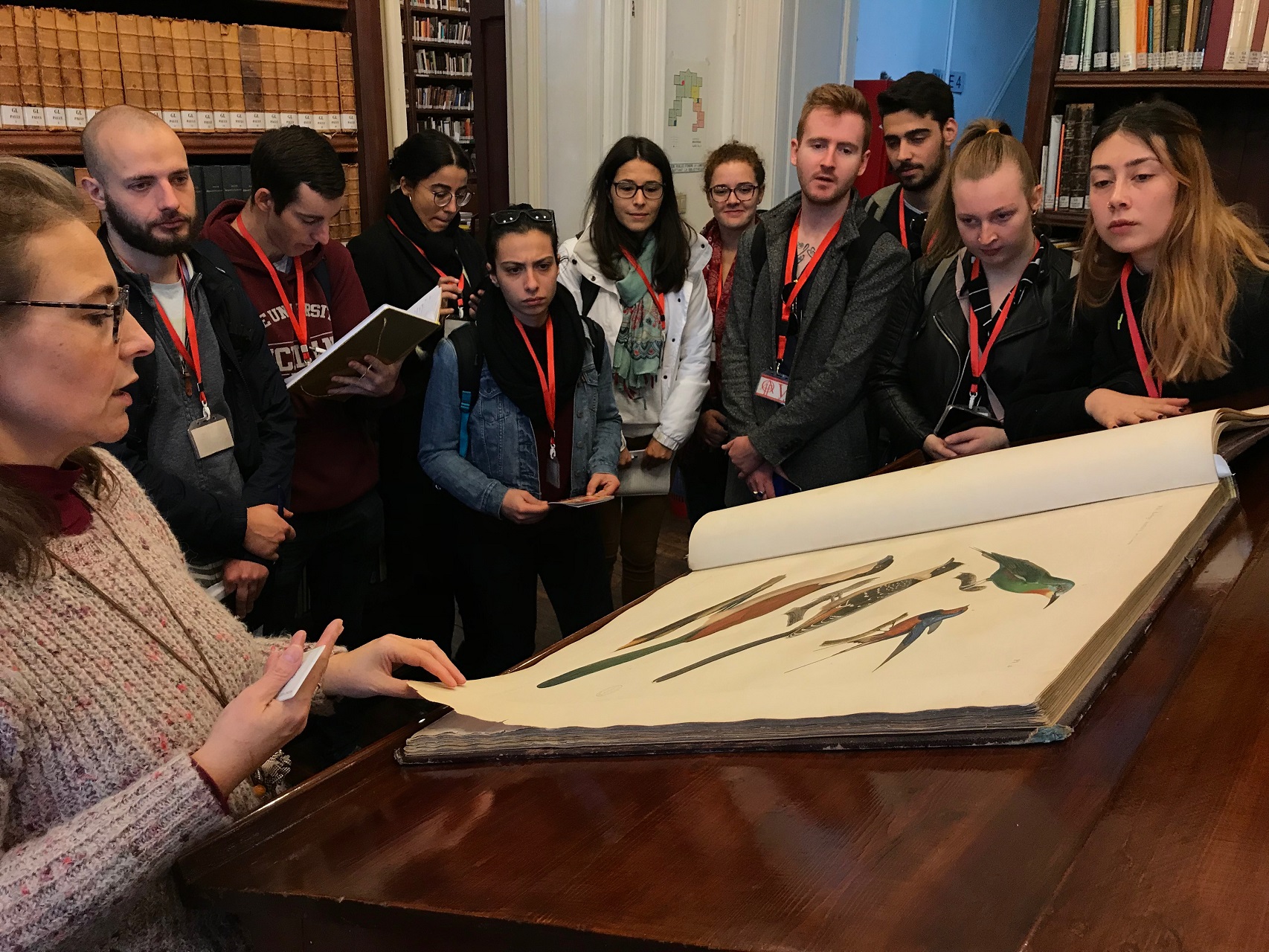Week 2: 12–18 January, 2020
The first day of week two started with an exciting visit to the Egyptian Museum where we first met Ilona Regulski from the British Museum. She introduced us to the EU-funded project that several European museums are currently working on to transform the museum, aiming to enhance the visitors experience and redefining its purpose. Next, Marwa introduced us to the digital database — something that will help us completing our museum and paper assignments (Insha’Allah!). Our visit continued with Christian Eckmann, who was responsible for restoring the beard of the funerary mask of Tutankhamun. He explained to us his work at the restoration lab on the gold appliqués from the tomb of Tutankhamun, which was something particularly exciting for all of us (fig. 1). We ended the day with our second Egyptian Arabic class, in which, among other things, we learned how to count to ten in Arabic.

On Monday we all met up in front of the IFAO to visit one of the most impressive institutes in Cairo, located in the ancient Mounira palace. We were shown around their impressive library (with over 93.000 books!), their archaeometry lab, and the printing house. After our visit to the IFAO we visited the American Research Center in Egypt (ARCE) where the library and archives were shown.
The next day, after our fourth Arabic lesson, we attended Julia Puglisi’s very interesting lecture on the use of three-dimensional models and digital reconstructions in Egyptology (fig. 2). She shared with us a bit of her experience as a digital humanist and gave us an insight into the Digital Giza Project at Harvard University. The class was impressed with these digital tools, particularly when using the "Dreaming the Sphinx" app!

On Wednesday we drove to Ayn Sukhna, a harbour on the Red Sea coast that was mainly used for expeditions to the Sinai Peninsula during the Old and Middle Kingdoms. We were received by Claire Somaglino (IFAO) who gave us a tour of the site. She showed us special features, such as the rock inscriptions that give us important details about the use of the site and its purpose. Before moving to the excavation area, we visited the galleries where boats and other materials were stored. Two boats have been preserved inside the galleries, because sand-dwellers put fire to two of these galleries. We were shown one of these remains, which was very impressive! In the lower area of the site we met Georges Verly, who taught us how the metallurgical units functioned that were used to transform copper extracted in the Sinai Peninsula (fig. 3). Before returning to Cairo, we visited the Suez Museum, which is mainly dedicated to Red Sea archaeology.

Thursday morning was a morning off, so some of us took the opportunity to go to the Egyptian Museum to use the database and complete the museum assignments. During the afternoon we had our last Arabic class (Ma’a-s-salama, ya Khawla!) and attended a lecture by Dr Ahmed Mekawy on Egyptian Middle Kingdom oyster shells. Here we learned that the oyster shells can be dated to the late Middle Kingdom and that rather than belonging to a military group, they were used as ornaments.
Following our day off on Friday, which we used to visit the Egyptian Museum and work on our assignments, we went on a field trip to Tanis. The site is enormous, something that surprised us all. François Leclère introduced us to site and the current work on conservation and site management, and we then had the opportunity to see for ourselves how puzzling the site is. Unfortunately Tanis has suffered a lot with monuments being taken elsewhere in Egypt, but it is possible to have an idea of how monumental it was just by looking around the site, and Marleen took the opportunity to challenge us to identify some of the cartouches while we were walking around. The cherry on the cake was entering in one of the tombs of the royal necropolis, an incredible experience. Tanis room at the Egyptian museum, we are coming (again) for you! (fig. 4)
Cheyenne Cozijnsen and Daniela Martins


